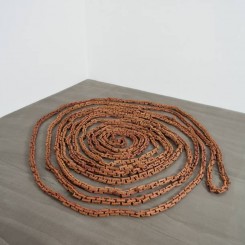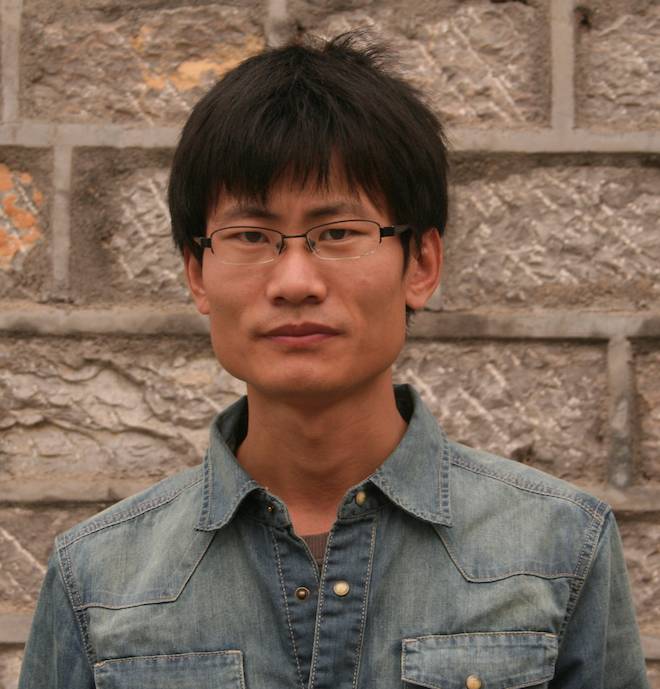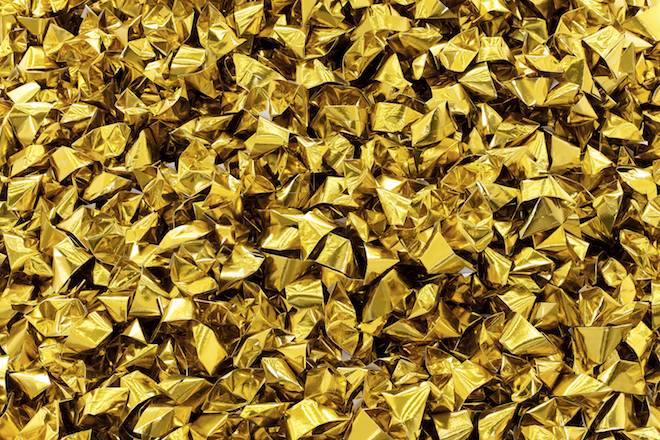Hu Qingyan (b. 1982, Shandong; lives and works in Beijing) is a graduate in sculpture from the Guangzhou Academy of Fine Arts and Central Academy in Beijing. His work to date has explored the possibilities and limitations of different media—which include wood, marble and clay—and the effects of their transformation from one form to another. It is his concern that contemporary sculpture should develop and be enriched by new approaches and new issues.
Iona Whittaker: How did your exhibition in Switzerland go?
Hu Qingyan: I left as soon as it opened. Even so, it was pretty enjoyable—I was able to talk honestly with a few interesting people about some of the pieces.
IW: What kinds of things did you talk about?
HQY: They didn’t use any plinths or platforms when setting up the exhibit; the sculptures were placed directly on the ground. A sculpture is a complete object in itself, while a base or a stand is yet another object. Placing the sculpture on a stand is extraneous, and it interferes with the display of the sculpture.
IW: What kind of relationship do you see between Chinese influences in your works and Western concepts?
HQY: Besides “Mountain of Gold” [referring to a piece made of gold paper], most of my work should be relatively accessible to Western audiences. They might mistake the gold paper for candy wrappers, when they’re actually pieces of paper burnt as offerings for those who’ve died. These things connect us to the dead.
IW: Is there a unifying theme in your work?
HQY: The title of the exhibition [“Reincarnation in a New Guise”] summarizes my overall thoughts, which are also expressed in each piece.
IW: Is “Reincarnation in a New Guise” an exhibition about breathing life into materials by displaying them in a new way?
HQY: Yes. Sculpture is composed of materials, and once these materials are turned into a sculpture, they shed their identity a simple substance and become something more. A sort of life is breathed into them. When you see them, they give you different associations; they spark off new feelings and emotions.
IW: So you try to imbue the materials with different sensations?
HQY: I do for some of my works. I tried to create different textural sensations in works like “Cloud” and “Stone,” but in “Firewood” the sculpture basically looks and feels like the material it’s made out of—wood. Sometimes I want my work to move away from the materials; sometimes I want to go back to the materials. Another theme that comes up is transformation. I recorded the transformation of clay through photographs in “Narrative by a Pile of Clay.”
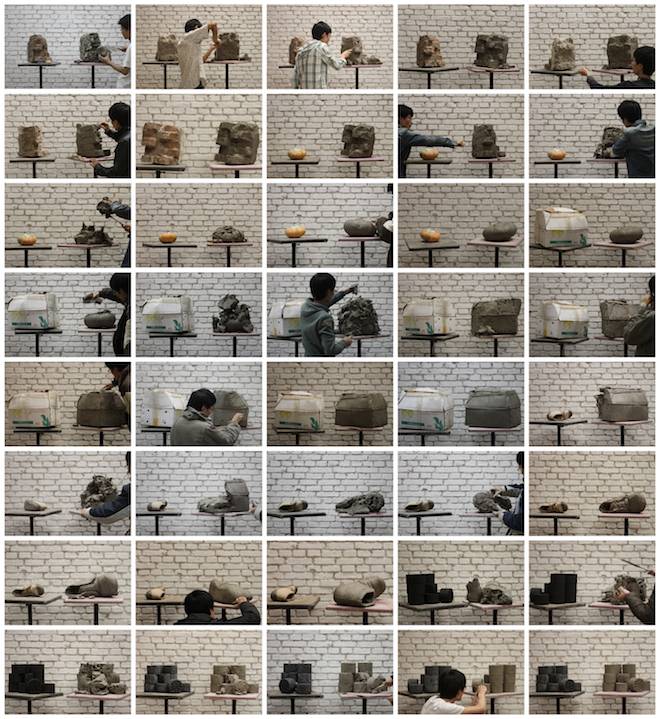
Hu Qingyan, “Narrative by A Pile of Clay 1-40,” c-print, unique set of 40 photos, each 20 x 30 cm, 2010-2011 (courtesy Galerie Urs Meile, Beijing-Lucerne)
IW: Are there any artists you especially admire?
HQY: There are many I like a lot, but there isn’t one whom I revere or place on a pedestal. Lots of artists have done great pieces, but I don’t idolize any of them.
IW: In your view, what do you think qualifies a sculpture as “good”?
HQY: All sculpture feels very substantial, but good sculpture builds on this sense of the physical. It embodies a strong sense of the artist’s individual touch; it offers new concepts from a unique angle—the artist might use a material in an innovative way to give viewers an entirely new experience, or he might offer a different angle or perspective, or an original way of rendering.
IW: Which method are you most satisfied with? Which do you use most often?
HQY: I started out learning realist sculpture, and I use it often even now. Outside China, it’s different; they don’t segment your learning when you start. Lots of people might begin with abstract sculpture or installations, but I’m most familiar and comfortable with realism, so I use it most frequently. In the end, realism is just a technique I use to make what I want.
IW: What kind of environment do you feel is most suitable for displaying your works?
HQY: It depends. The environment shouldn’t be chosen at random, but exhibiting the same piece in different surroundings can have interesting effects as well. You can adjust the exhibit based on whether it’s an individual or group show. How pieces are placed is important too.
IW: How do adjust the relationship between the piece and the space?
HQY: I emphasize the pieces themselves, because they don’t have a close relationship to the surrounding space. As long as there’s enough space for the object to fit into, I’m satisfied. Even if they decided to put a piece in the gallery basement, in the dark, I’d be fine with it.
IW: How do you deal with the relationship between traditional and modern elements in your works?
HQY: I don’t think there’s much of a difference. I use a lot of traditional techniques, but the issues reflected in my works aren’t passé because they are about present concerns. It might seem strange to blend the traditional with the modern in this way, but I don’t personally feel there’s a great disconnection between the two.
IW: As you’ve said before, “Narrative by a Pile of Clay” is about the clay’s transformation rather than the final state of the work. Could you share more of your thoughts on this piece?
HQY: Time is important. The purpose of this work is not to finish something fixed. Some of the objects I made along the way were chosen at random, they aren’t necessary linked in any way.
I used to model an object out of clay and then recreate it in a solid material, but I found this method so disconnected from life that I couldn’t convince myself to keep using it. To elaborate, a brick will stay as it is for a long time, but it will eventually disintegrate. At first, it’s placed in a wall, and one day it might fall out. Our lives are the same; we exist and then we cease to exist. The way I used to work was so removed from existence that it no longer had any relationship to life. So I started trying to display the changing world, because with the passage of time, nothing is eternal.
IW: How does it feel when you destroy a completed work and turn it into something new?
HQY: By the time I’m finishing with the first object, I’m already thinking about the next thing, how to make it different from the previous one. I attempt to incorporate the entire world through this process, mimicking the continuous fluctuations happening in the world.
IW: [pointing at a piece] What is the motivation behind this work?
HQY: I worked on this for three years between ’08 and ’10. I was at school at the time, and didn’t have any opportunities to participate in any exhibitions, but I did attend many large-scale exhibitions and saw many large-scale works. So I thought, other people are working in bigger and bigger ways, taking part in exhibitions, so I’ll work smaller and smaller, starting with rocks; this way, I won’t need any exhibition space.
IW: It’s like a rehearsal. You started with boxes, moved on to bones, then soap, soy beans, powder…and eventually everything disappears.
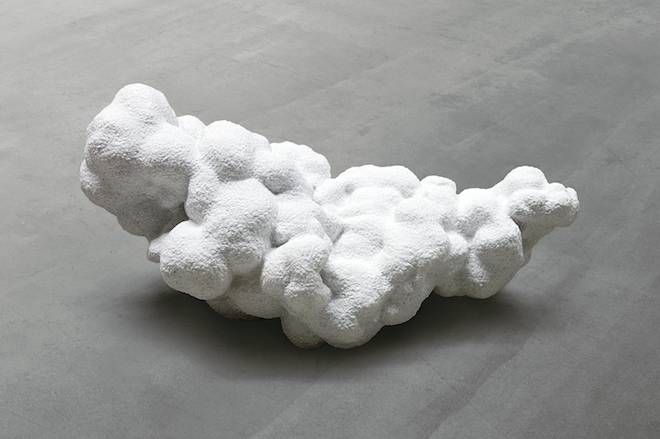
Hu Qingyan, “Cloud – 2012,” marble, 45 x 96 x 55 cm, 2012 (courtesy Galerie Urs Meile, Beijing-Lucerne)
胡庆雁 《一朵云彩-2012》, 大理石, 45 x 96 x 55 cm, 2012 (图片:麦勒画廊 北京-卢森)
HQY: People ask me, what is sculpture? I think this is the essence of sculpture. A completed and fixed form could almost be photography or painting. On the other hand, I think incomplete forms—like a pile of objects, for example—are better defined as sculpture. If you take away the elements of form and image, sculptures are simply objects. A lot of sculptures look just like paintings after you photograph them; those aren’t true sculptures. In this work, the paintings on the front and the back form a sculpture, expressing the relationship between painting and sculpture. You can expand on the basis of an object with different elements like time, movement, or so on.
IW: Do you feel any aversion toward permanent sculpture after having worked with the concept of “fluidity”?
HQY: If I’m able to create something new, I’ll convince myself to work in a fixed way.
IW: It’s extremely difficult to find anything new.
HQY: If you take this work as an example, where I’ve painted on both sides of the canvas. It started out looking like a painting, but now that it’s finished, it doesn’t fall clearly into the category of sculpture or painting. It’s up to the audience’s interpretation. That’s why I made this piece in the first place, to stimulate exploration into the concept of sculpture versus painting. The style of these paintings seems abstract, but I painted them by copying another painting; so, are they realist or abstract? These are questions I find interesting.
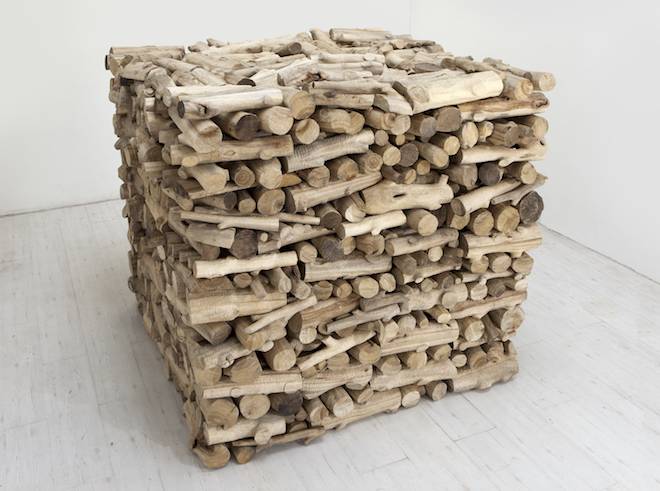
Hu Qingyan, “Firewood,” camphor-wood, 200 x 200 x 200 cm, 2012 (courtesy: Galerie Urs Meile, Beijing-Lucerne)
胡庆雁,《柴火》,樟木, 200 x 200 x 200 cm,2012 (图片提供:麦勒画廊 北京-卢森)
IW: Many pieces such as “Wood Pagoda” or “Firewood” don’t look very complicated—they’re presented very naturally. Do you always choose to use simple methods?
HQY: Even if I’ve used a very complicated technique, I still want my people to see the work and get a sense of purity and simplicity. I don’t want my works to become too complicated.
IW: What is the most important thing you consider when moulding?
HQY: The shape is far more important that the image. I’ll first think about what I want to express, what I want people to feel, and then I’ll choose a suitable shape to demonstrate that feeling.
IW: Do you always consider the audience’s feelings when you’re working?
HQY: More or less. Some people believe their ideas and concepts should come first, putting the audience second, but in the end, all ideas and concepts need to be conveyed somehow, so I do think about the audience.
IW: Do your predictions about the audience’s reaction usually end up in line with their actual response?
HQY: They’re roughly the same.
IW: What is your favorite part of your work as an artist?
HQY: I love the freedom. Sometimes I work, sometimes I teach, sometimes I go out, often, I reflect on my work.
IW: Do you ever discover new questions when you reflect on your work?
HQY: Yes, I try to solve them in the next piece. One piece might vanish over time, but I might keep working on another piece. The world keeps turning.
IW: Do you think traditional Chinese sculpture should change in some way?
HQY: There are definitely going to be changes, it’s not a question of should or should not. Sculpture has fallen behind painting. If it never changes, there will never be any developments; we have to be concerned with new issues.
IW: What do you anticipate for yourself and your creative future?
HQY: I want to make sculptures that I’m personally happy with. I don’t altogether approve of some of the things I’ve learned, so I want to make something I approve of, something richer, even if it’s somewhat personalized and immature.
IW: Thank you, Qingyan.

